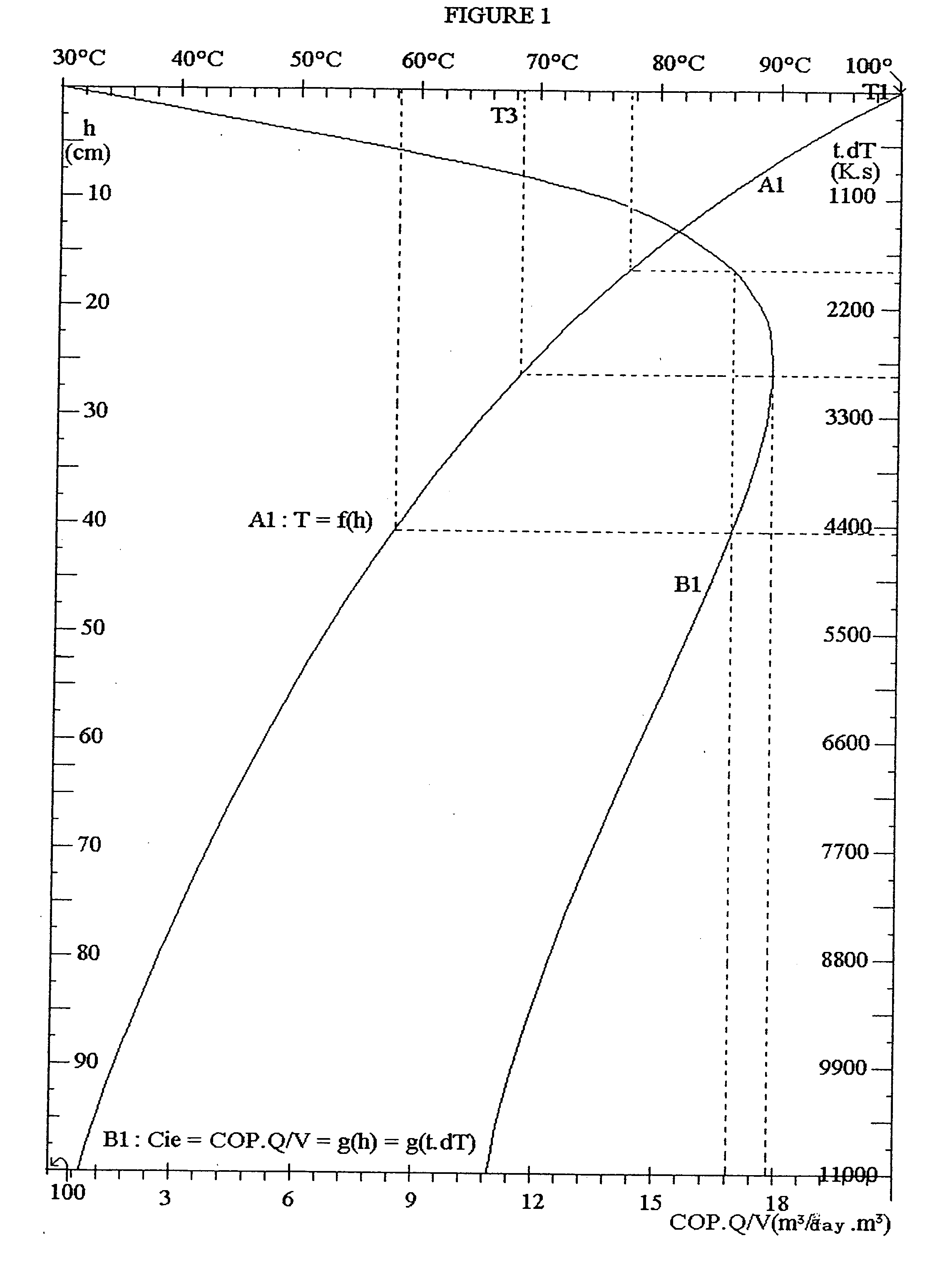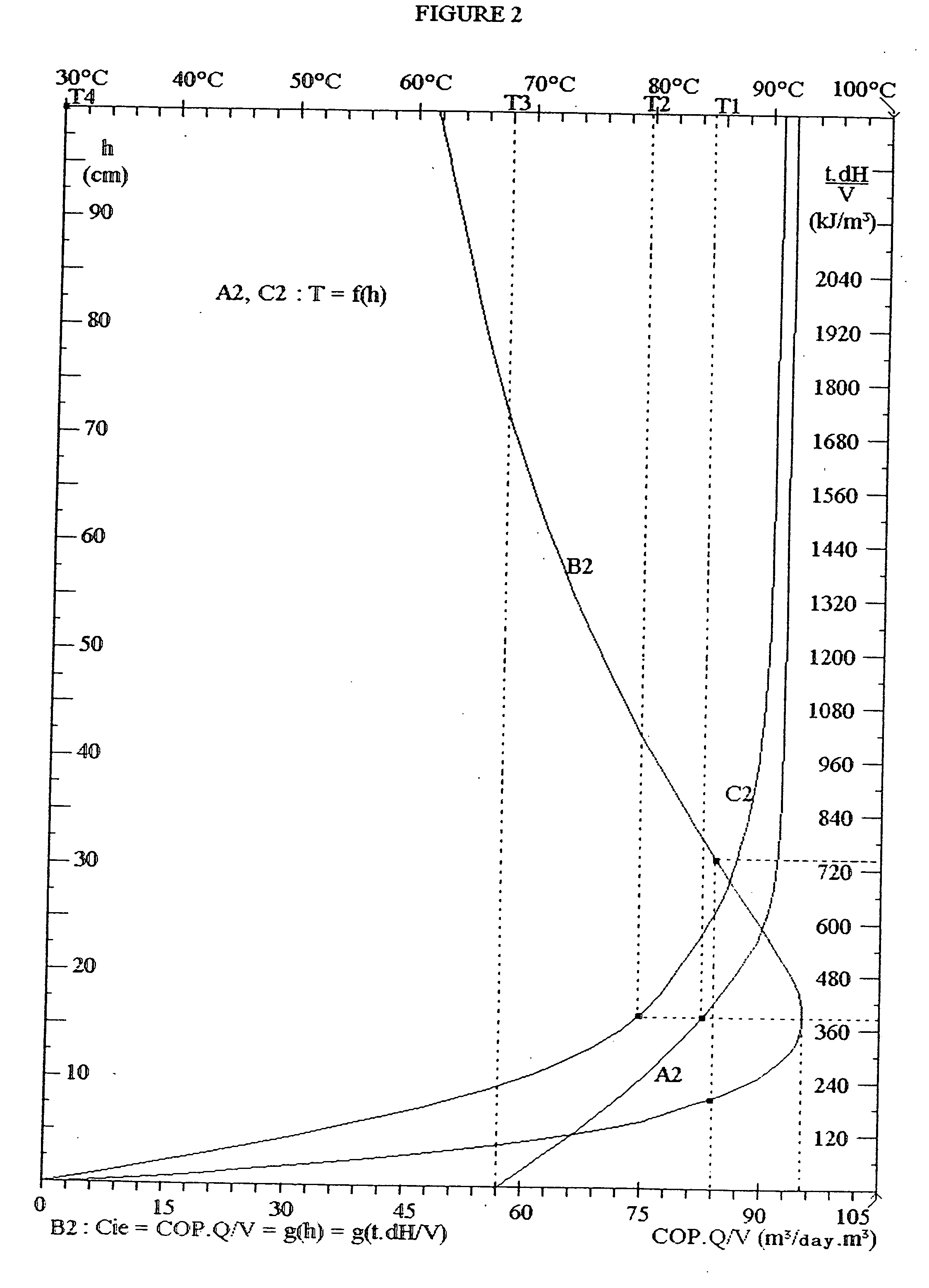Distillation methods and devices in particular for producing potable water
a technology of distillation method and potable water, which is applied in the direction of vacuum distillation separation, vessel construction, separation process, etc., can solve the problems of scarcely being able to establish significant thermal conductance between, poorly defined thermal conductance connection, and inability to achieve significant thermal conductance, etc., to achieve optimum compactness, reduce weight and intrinsic stability, and high efficiency
- Summary
- Abstract
- Description
- Claims
- Application Information
AI Technical Summary
Benefits of technology
Problems solved by technology
Method used
Image
Examples
first embodiment
[0202] According to the diagram in FIG. 3, which constitutes a still according to the invention, two plates 10, 12 symbolically represent a vapour-diffusion distillation and heat-transfer-liquid unit, constituted by a set of large rigid cellular plates (50 to 150 dm2), rectangular in shape, installed in the treatment chamber of a vapour-diffusion and heat-transfer-liquid still, according to the present invention. These hollow plates 10, 12 have a small internal thickness (2 to 3 mm for example) and are separated from each other by a narrow free space 14, having a thickness of approximately 5 mm, filled with a non-condensable gas, in particular air at atmospheric pressure. The hollow plate 10 is referred to as hot since it is assigned to the evaporation of the liquid to be distilled and, to this end, it is provided with a hydrophilic or wettable coating 16. The hollow plate 12 is referred to as cold since it is assigned to the condensation of the vapour diffused in the non-condensabl...
second embodiment
[0205]FIG. 4 represents a diagram of a vapour-diffusion still, according to the invention, in which the direction of circulation of the heat-transfer liquid in the hot plates is from the bottom upwards, the reverse of that in FIG. 3. Consequently, the components of the two distillation units in FIGS. 3 and 4 are identical, and the diagram is more or less symmetrical to that in FIG. 3, their other components being identical or equivalent. They have been given all the same numerical references, with however an additional sign (′) for those in FIG. 4. This is in order to differentiate them from each other, the ways in which they are connected together being different. The inlet to the hot hollow plate 10′ is connected, by its bottom coupling 11′a and a duct 11′, to the outlet from the heating chamber 19′ of a boiler 18′ equipped with a heating tube 17′. The outlet from the hot plate 10′ is connected, by its top coupling 11′ b, to one of the inlets to a mixer 20′, the other inlet to whi...
third embodiment
[0208]FIG. 5 is a flow diagram of a first vapour-diffusion still using air, saturated with vapour of the liquid to be distilled, as heat-transfer fluid. It has the characteristic of causing the air to circulate inside hollow distillation plates from the top downwards. This device constitutes a still according to the invention.
[0209] According to this FIG. 5, the internal 50 and external faces 52 of one of the two walls of a large rectangular hollow distillation plate 54 respectively border its internal volume 56 and the free space 58 which separates two adjacent plates. This plate 54 symbolically represents a vapour-diffusion and heat-transfer-gas distillation unit, constituted by a large number N of flexible or rigid hollow distillation plates, separated by narrow inter-plate spaces. The external face 52 of the wall of the plate 54 comprises a hydrophilic coating 60. In the vicinity of these first N hollow plates, a reduced number n of auxiliary hollow plates for preheating the liq...
PUM
| Property | Measurement | Unit |
|---|---|---|
| temperature T3 | aaaaa | aaaaa |
| temperature T1 | aaaaa | aaaaa |
| temperature T1 | aaaaa | aaaaa |
Abstract
Description
Claims
Application Information
 Login to View More
Login to View More - R&D
- Intellectual Property
- Life Sciences
- Materials
- Tech Scout
- Unparalleled Data Quality
- Higher Quality Content
- 60% Fewer Hallucinations
Browse by: Latest US Patents, China's latest patents, Technical Efficacy Thesaurus, Application Domain, Technology Topic, Popular Technical Reports.
© 2025 PatSnap. All rights reserved.Legal|Privacy policy|Modern Slavery Act Transparency Statement|Sitemap|About US| Contact US: help@patsnap.com



